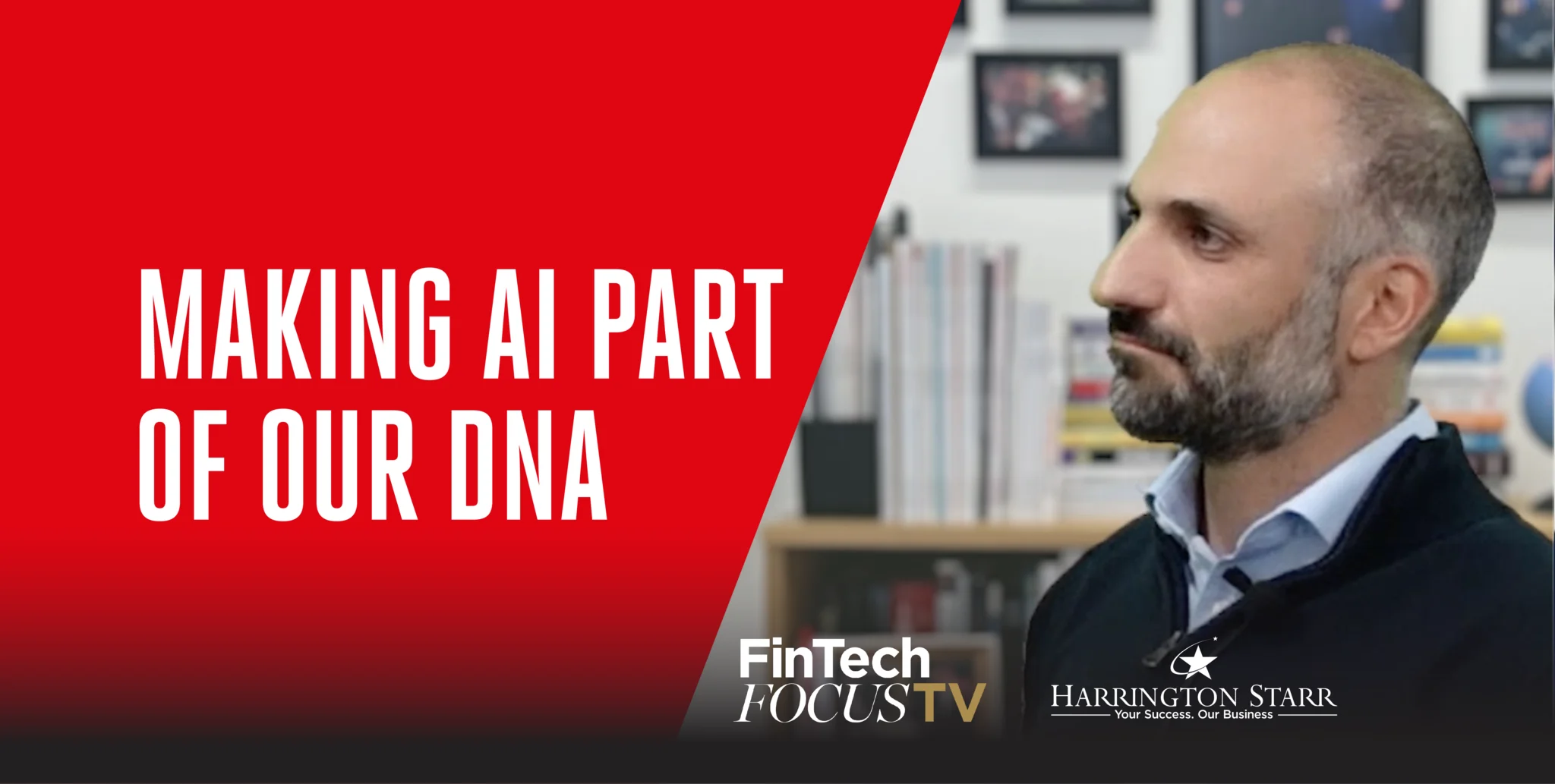
How Sequitor Engineering Is Redefining Market Simulation
The latest episode of FinTech Focus TV, hosted by Toby, brings together two influential voices shaping the next era of market-infrastructure technology: Rolf Andersson, Co-Founder and CEO, and Himesh Soneji, Advisor at Sequitor Engineering. Drawing from decades of exchange-system engineering, trading-technology development, and deep market knowledge, the conversation delivers a rare and detailed look at what may be one of the most disruptive innovations in modern electronic trading: full-scale, high-fidelity exchange simulation.
For organisations hiring in FinTech, quantitative trading, software engineering, and market infrastructure, as we support at Harrington Starr, this episode surfaces critical themes. These include performance engineering, system resilience, optimisation of release cycles, and the growing need for specialist technical talent who understand the complexities of trading-system architecture. This summary explores the full narrative of the conversation and positions it within broader trends impacting FinTech recruitment, technology transformation, and competitive advantage.
FinTech Technology Innovation: Rolf Andersson’s Journey from Exchange Systems to Sequitor Engineering
The episode begins with Toby welcoming Rolf, whose career has spanned over three decades, building trading and exchange systems. Rolf’s background includes fifteen years running Pantor, a company that built trading systems from first principles before being acquired by Goldman Sachs. After completing that chapter and spending several years at Goldman, Rolf recognised an opportunity to solve a longstanding challenge across the trading ecosystem.
In 2019, he founded Sequitor Engineering to build something many believed was impossible: real, full-scale, high-fidelity replicas of exchange systems that behave like the real thing, down to the granular functional detail. The intention was not to create test environments that looked similar to exchanges, but platforms that behaved identically, so firms could finally perform meaningful scenario testing, algorithm validation, and latency analysis at scale.
Rolf explains that the idea emerged from a real pain point he experienced back in 2013, when Pantor faced a critical production issue that took over a week to diagnose. He recalls telling himself, “When I get enough time and money, I’m going to build the test platform that I would need to fix this problem.” Sequitor Engineering eventually became that platform.
For hiring managers in FinTech recruitment, this origin story exemplifies a pattern we see across the market: the most meaningful innovation is born from domain expertise, lived operational pain, and a founder’s determination to build what others dismiss as unachievable.
FinTech Simulation Technology: How Sequitor Engineering Built the “Next Big Thing” in Market Testing
Toby asks Rolf and Himesh to unpack what makes Sequitor Engineering so unique. Rolf explains that building exchange replicas requires deep knowledge of how exchange systems have evolved across generations. While exchanges often appear similar to the outside world, their internal behaviours, matching logic, and message flows are full of nuanced differences.
Sequitor spent four intense years building behavioural accuracy across more than twenty major global exchange platforms. Rolf points out that their goal was not simply to recreate the order book, but to reconstruct behaviourally identical environments that could respond to order flow in real time, just as production exchanges do.
Himesh adds context from the client side. He notes that traders, quants, and developers have traditionally relied on static historical data replay to test algorithms. This method validates whether an algorithm can digest data, but it cannot show how the market will react to that algorithm’s decisions. Sequitor’s platform changes this entirely by enabling lifelike interaction: clients can place their liquidity into the simulation and observe how the simulated market responds.
For financial institutions, hedge funds, trading firms, and market-infrastructure providers, many of whom rely heavily on specialist engineering talent, Sequitor’s capabilities create a new frontier of testing sophistication. This reinforces the ongoing demand for high-quality FinTech engineers, quantitative developers, and low-latency specialists across global markets.
FinTech Competitive Advantage: Why Buy Side and Sell Side Firms Need Advanced Testing
Throughout the conversation, both guests emphasise the intensifying competitive pressures in the trading world. Algorithms are now detected and reverse-engineered faster than ever before. Success is no longer just about building an effective strategy but getting it into production before competitors adapt.
Rolf explains that once an algorithm behaves in a profitable way, competitors quickly become adversarial to it. Firms, therefore, must shorten release cycles, improve validation processes, and expand scenario testing dramatically. Sequitor’s lightweight architecture allows clients to spin up thousands of simulations in parallel, which would be impossible using traditional exchange-like systems that carry significant technical overhead.
Speed is everything, and accurate behavioural simulation unlocks that speed.
Himesh highlights the contrast with current UAT environments provided by exchanges. These platforms are often not available 24/7, lack realistic behaviour, and cannot provide private testing environments. In contrast, Sequitor offers constant availability and complete privacy, allowing clients to refine strategies, test reactions, and understand liquidity behaviour in an environment that mirrors production conditions.
For recruitment across FinTech roles, including infrastructure engineering, DevOps, SRE, and quantitative development, the message is clear: firms that want to remain competitive need talent capable of building, maintaining, and innovating within high-performance, real-time testing ecosystems. This demand aligns with trends across Harrington Starr’s specialist hiring markets.
FinTech Performance Engineering: Solving the Timing Accuracy Challenge
One of the most technically fascinating parts of the conversation centres on timing accuracy. Sequitor’s simulation platform is significantly faster than real exchanges, so fast, in fact, that this creates an unexpected challenge. Clients testing their strategies may see skewed timing behaviour because Sequitor processes messages faster than live markets.
To solve this, the next phase of Sequitor’s roadmap is building timing accuracy into the simulation so that it behaves not just logically like the real exchange, but temporally like it too. This is a complex engineering challenge requiring precise control cycles. Rolf describes timing accuracy as “a more interesting problem,” highlighting the intellectual excitement that motivates advanced engineers.
For companies hiring in FinTech performance engineering, HFT engineering, or latency-sensitive systems roles, this illustrates the growing need for specialists who understand high-fidelity timing, low-latency design, exchange-protocol behaviour, and performance optimisation.
FinTech Market Infrastructure: Why Sequitor Engineering Is Disrupting Legacy Approaches
The podcast also touches on why incumbents have not built similar systems. Rolf explains that large organisations like banks and exchange groups are focused heavily on production systems. Their compensation structures, resource allocation models, and development roadmaps simply do not incentivise deep investment in testing environments.
Test developers are not rewarded like production developers, and testing platforms are treated as secondary concerns rather than strategic tools. Sequitor Engineering, by contrast, builds only test systems. Every engineer, every line of code, and every hour of development is incentivised around test-system excellence.
This is one of the reasons Sequitor can release updates within hours, mirroring the release cadence of fast-moving client development groups. One client reported a behaviour discrepancy at 6pm, and Sequitor had an updated release ready by 10pm.
This level of responsiveness, iteration, and specialisation is what modern FinTech firms increasingly seek in their technology partners, and what requires exceptional engineering talent. As a FinTech recruitment business, we see a growing number of organisations seeking individuals with similar mindsets: engineers motivated by precision, iteration, and long-term system excellence.
FinTech Red Teaming: Building the Future of Market Infrastructure
Toby asks Rolf where the company is heading next. Rolf envisions Sequitor Engineering playing a direct role in the development of future exchange systems through “red teaming”, a strategy where Sequitor acts as the adversarial testing environment for live exchanges, helping them validate new versions, gateways, and infrastructure.
He describes prior work with Nasdaq Nordic, where Sequitor effectively halved the development time of new gateway functionality by building simulated behaviour months before the exchange’s own changes were complete. By creating a behavioural reference point early, Sequitor allowed teams to observe system behaviour long before official release.
This approach could become foundational to how new trading systems are built. Exchanges, sell-side institutions, and major buy-side firms could incorporate Sequitor’s simulation capabilities into every stage of their testing lifecycle. This vision reinforces the rising demand for highly technical FinTech engineering talent capable of operating in complex, simulated environments, something we at Harrington Starr see growing across New York, London, and Europe.
FinTech Risk, Performance, and Consistency: The Future of Testing Standards
Towards the end of the episode, the conversation turns to performance and the critical distinction between low latency and consistent latency. Rolf and Himesh reference commentary from industry leaders, who highlight that unpredictable latency spikes, even rare ones, can be catastrophic for trading performance.
Sequitor’s simulation platform allows clients to test for these scenarios, understand tail latencies, and explore how performance behaviour affects real strategies. For firms hiring in algorithmic trading, quantitative research, or high-performance engineering, these are essential technical considerations that inform system design and operational strategy.
Himesh expresses his broader vision: he wants Sequitor to become the “gold standard for everything to do with performance in the financial markets,” even suggesting that regulators may one day ask whether a firm tested using Sequitor’s system before approving new releases.
This goal aligns closely with the direction of FinTech transformation and reinforces the long-term demand for talent across infrastructure, testing, quality engineering, quantitative development, and real-time market systems.
FinTech Client Engagement: Who Should Be Talking to Sequitor Engineering?
As the episode concludes, Toby asks the guests who should be speaking to Sequitor Engineering today. Himesh explains that anyone operating in financial markets, whether buy side, sell side, trading entity, or any organisation interacting with exchanges, should understand what Sequitor does. Anyone with a development lifecycle tied to market interaction stands to benefit.
Rolf adds that conversations should be specific. Firms should come with real problems: performance challenges, resilience issues, platform rebuilds, latency concerns, or algorithmic testing needs. Sequitor thrives on solving concrete technical problems rather than general enquiries.
This mirrors the trend we see in FinTech recruitment: firms increasingly want specialists who solve precise, high-value problems rather than general technologists.
FinTech Recruitment Perspective: Why This Episode Matters for the Future of the Industry
This FinTech Focus TV episode underscores a major shift happening across global trading and market-infrastructure technology. The need for advanced simulation, behavioural testing, and performance engineering is growing rapidly. Firms now compete on latency, insight, accuracy, and the speed of their release cycles, and they need exceptional talent to deliver that competitive edge.
This podcast episode highlights why that demand will only continue to grow. Sequitor Engineering represents the future of market testing, and firms that adopt these capabilities early will require the best engineering talent to support them.
FinTech Focus TV
FinTech Focus TV continues to spotlight the innovators shaping the future of financial technology. With Rolf Andersson and Himesh Soneji, Toby hosts a compelling conversation about the challenges, breakthroughs, and future potential of full-scale exchange simulation.
From technical architecture to regulatory implications, from ultra-fast iteration to competitive advantage, this episode offers a detailed understanding of why robust testing environments are becoming essential across the trading ecosystem.
For FinTech businesses hiring in trading technology, market infrastructure, and performance engineering, these insights are particularly valuable. And for organisations needing exceptional talent in these areas, Harrington Starr remains a trusted recruitment partner across London, New York, Europe, and beyond.





